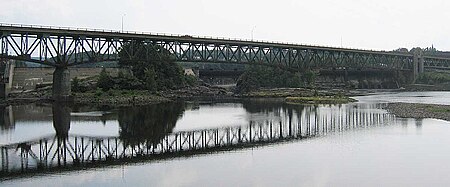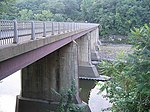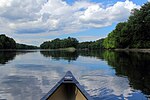Turners Falls–Gill Bridge
Bridges completed in 1938Bridges in Franklin County, MassachusettsBridges over the Connecticut RiverGill, MassachusettsMontague, Massachusetts ... and 3 more
Road bridges in MassachusettsSteel bridges in the United StatesTruss bridges in the United States

The Turners Falls–Gill Bridge (sometimes called the Gill–Montague Bridge), is a steel deck truss bridge crossing the Connecticut River in Massachusetts. It connects the Town of Gill with the village of Turners Falls in the Town of Montague. The bridge carries automobile and pedestrian traffic.
Excerpt from the Wikipedia article Turners Falls–Gill Bridge (License: CC BY-SA 3.0, Authors, Images).Turners Falls–Gill Bridge
Gill-Montague Bridge,
Geographical coordinates (GPS) Address External links Nearby Places Show on map
Geographical coordinates (GPS)
| Latitude | Longitude |
|---|---|
| N 42.6115 ° | E -72.552 ° |
Address
Gill-Montague Bridge
Gill-Montague Bridge
01376
Massachusetts, United States
Open on Google Maps







